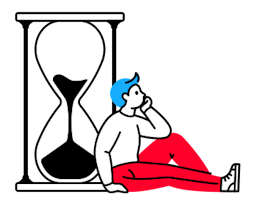January 17, 2024
The History of Medicaid HCBS Waitlists
by Sam Crutchfield, General Manager @ Kibu

Introduction
Medicaid Home and Community-Based Services (HCBS) have played a vital role in providing long-term care and support for individuals with disabilities and the elderly. However, as the demand for these services has increased over the years, so too have waiting lists. Waitlists are where eligible individuals have to wait to access the services they need due to issues, including insufficient funding and insufficient staff at providers to accommodate individuals. In this blog post, we will delve into the history of waiting lists for Medicaid HCBS, spanning from their creation in 1981 to the present day, 2024. We will rely on data points to present a comprehensive overview of this complex issue without bias.
The Birth of Medicaid Home and Community-Based Services
In 1981, the federal government introduced a significant amendment to the Medicaid program, allowing states to establish HCBS waiver programs. These programs aimed to provide an alternative to institutional care by allowing eligible individuals to receive services in their homes and communities, thereby promoting independence and improving the quality of life for Medicaid beneficiaries.
The initial goal of HCBS was to reduce the overreliance on nursing home care and offer individuals more choice and control over their care. However, as the popularity of these services grew, states began to grapple with the challenges of managing waitlists for Medicaid HCBS.
The Growth of Medicaid HCBS Waiting Lists
As Medicaid HCBS programs gained traction, the demand for these services began to outstrip the available resources. Let's examine some key data points to understand the growth of HCBS waiting lists over the years:
- 1981-1990: During the early years of Medicaid HCBS, waiting lists were relatively short, with many states managing to keep them minimal or even non-existent. This was largely due to the limited awareness and utilization of HCBS programs.
- 1990-2000: As awareness of HCBS services expanded and the aging population increased, waiting lists began to grow. In 1990, only a few states reported waiting lists, but by 2000, the number of individuals on waitlists started to rise significantly.
- 2000-2010: The 21st century witnessed a substantial increase in the demand for HCBS, driven by the desire for community-based care and the recognition of its cost-effectiveness compared to institutional care. Waiting lists expanded rapidly during this period, with many states struggling to meet the demand.
- 2010-2020: The passage of the Affordable Care Act (ACA) in 2010 brought additional funding and attention to HCBS. However, waiting lists remained a persistent issue. Data from this decade showed that over 700,000 people were on HCBS waiting lists across the United States.
- 2020-2024: The COVID-19 pandemic further underscored the importance of home and community-based care, as the risks associated with congregate settings became evident. Despite the increased emphasis on HCBS, waiting lists have continued to grow, with the number of people in need of services far surpassing the available slots.
Challenges Faced by States
The growth of HCBS waiting lists has presented numerous challenges for states and the individuals waiting for services. Several factors contribute to the persistence of waiting lists:
- Limited Funding: HCBS programs rely on a combination of federal and state funding. Insufficient funding can lead to a shortage of available slots and longer waiting times for beneficiaries.
- Eligibility Criteria: States often have strict eligibility criteria for HCBS programs, limiting the number of people who can access these services. This contributes to waiting lists as eligible individuals compete for limited spots.
- Aging Population: The aging baby boomer population has placed additional strain on HCBS programs. As more individuals seek services to age in place, the demand for HCBS has increased significantly.
- Workforce Shortages: A shortage of trained caregivers and healthcare professionals can hinder the expansion of HCBS programs and lead to longer waiting lists.
- Complex Application Process: Cumbersome application processes and bureaucratic hurdles can deter individuals from applying for HCBS, contributing to the perception of lengthy waiting lists.
Efforts to Address Waiting Lists
Recognizing the importance of addressing HCBS waiting lists, federal and state governments, as well as advocacy groups, have taken various steps to mitigate the issue:
- Increased Funding: The federal government has allocated additional funding through initiatives like the Balancing Incentive Program and the Money Follows the Person Program to help states reduce waiting lists.
- Streamlined Eligibility: Some states have revised their eligibility criteria to include more individuals in HCBS programs, reducing the backlog of people waiting for services.
- Priority Lists: Some states have implemented priority lists to ensure that individuals with the greatest need receive services first, helping to allocate resources more efficiently.
- Expansion of Workforce: Efforts have been made to expand the caregiver workforce and provide training to meet the growing demand for HCBS.
Conclusion
A steady increase in demand for these vital programs marks the history of waiting lists for Medicaid Home and Community-Based Services. While the growth of waiting lists has posed significant challenges, it's essential to recognize the positive impact HCBS has had on countless individuals who prefer to receive care in their homes and communities.
Data points reveal that waiting lists have expanded over the years, reflecting the need for continued efforts to address this issue. Increased funding, streamlined eligibility criteria, and an emphasis on workforce development are all steps in the right direction. As we move forward into 2024 and beyond, we must prioritize HCBS and work collaboratively to ensure that all individuals needing these services can access them promptly.
Are you waiting in line instead of moving forward with Kibu? Should your local provider give you access to Kibu? Click that ‘kibu’ in the top left corner to learn more.
Written by Sam Crutchfield, General Manager @ Kibu